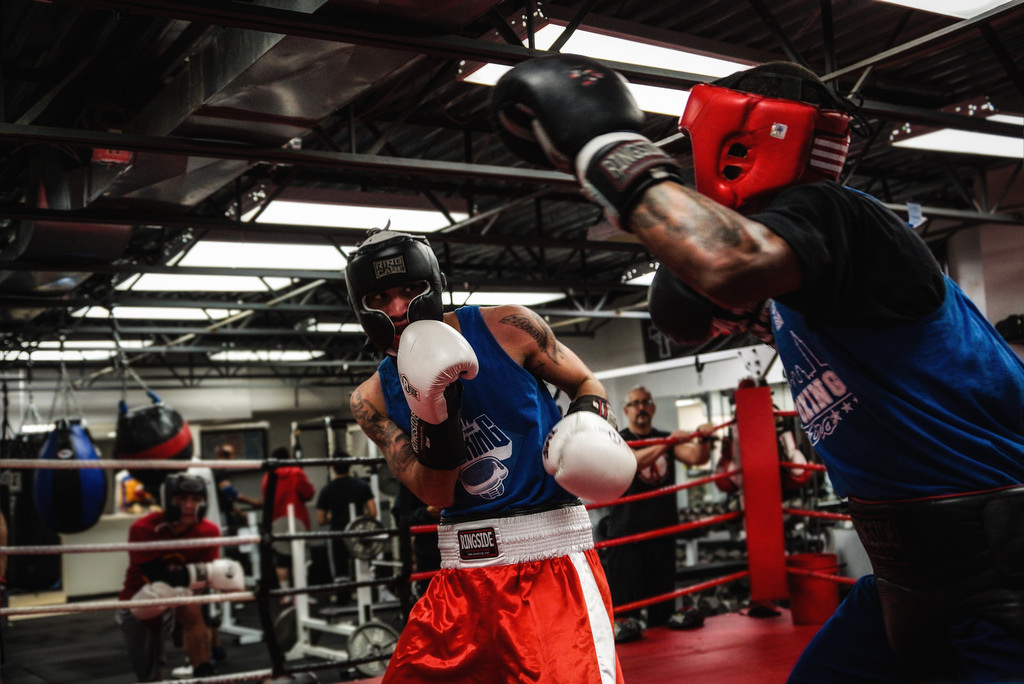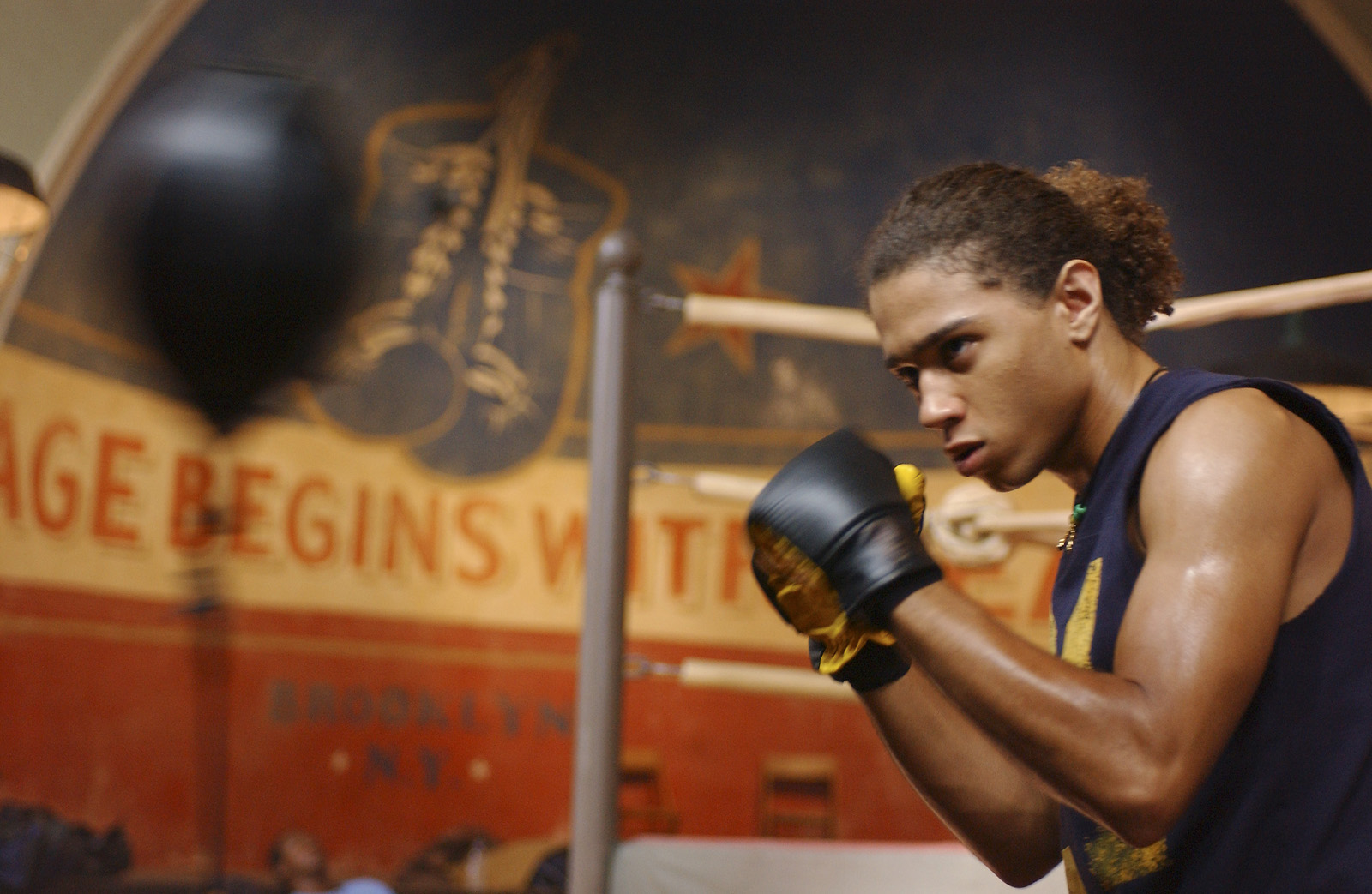It’s not all about power.
Yet, for many newbie boxers, brute strength, and how hard they can smash the bag, is their primary concern.
Under their coach’s guidance, they learn that power comes from sound technique, so they slow it down and concentrate on mastery of the movements.
They want to look good throwing combos, so it’s not long before they’re working on developing fast hands. They realize that speed can trump power, and they’re proud of their bullet-fast hands capable of spitting out six punch combos in a second.
And while power, speed, and proper technique are all vital for a boxer’s development, no beginner, it seems, is focus on improving a skill that determines the outcome of many fights: fighting reflexes.
It’s not until you get hit a few times in the chops, does the importance of reflexes take hold. It’s very much an (often painful) afterthought.
Why Fast Reflexes Are Important for Boxers
Boxing, at its purest form, can be thought of as a battle of reflexive abilities.
Power, stamina, speed, defensive ability, fighting style, and strategy, all play their role, but without reflexes at the center of it all, your time in the ring is likely to be short-lived.
If you don’t have fast reflexes, you might as well chuck your gloves in the closet and bury any dreams you had of becoming a boxer. Unless, of course, your plan is to be a human punch bag.
That being said, having cat-like reflexes is not enough on its own. Anyone can flinch like a little bitch when a punch comes towards them.
In fact, most people’s natural reaction would be to close their eyes, stiffen their body, and screw up their face in preparation for the blow.
As a boxer, you have to retrain your brain so that you instinctively perform a defensive maneuver while remaining focused on your attacker and looking for an opportunity to capitalize on their mistakes.
In other words; you have to develop fight reflexes.
And if you want to be at the top of your game, you have to work on improving the speed at which you perform those defensive movements.
It’s the key to winning rounds. Taking less damage and following up with whippet-fast and devastating counters will win fights. Period.
And if your reflexes are currently as slow as a week in jail, I’ve got good news… it’s entirely possible to develop fast boxing reflexes with the right training.
Nature or Nurture: Can You Improve Reflexes?
Our genetic makeup has a significant influence on our speed, power, agility, and reaction time.
There’s not a whole lot we can do to improve our response speed. Exercises designed to increase reflexes, improve situational awareness more than anything else.
So, if we’re born with a certain speed of reaction which can only be improved marginally if at all, is there any point in even trying?
Well, just like all human traits, reaction speed is spread across the population in a bell curve with the vast majority of people having the same (or average) response time.
You’re therefore likely to be fighting someone with similar reflexes – which remember, is a trait you can’t do much to develop.
However, there is a skill that you can drastically improve, and one which I recommend you focus your efforts: the effectiveness of your defensive reaction.
If you instinctively react (hint: the answer’s YES if you’re human), then you can train yourself to react in a certain way.
You just have to drill your response to the stimuli of a punch until your natural reaction is to either:
a) Perform a defensive maneuver: block, slip, duck, roll, parry, or simply move out the way.
b) Perform a) followed by a counter attack.
So, while some people may hold a slight genetic advantage when it comes to reaction speed, know that they can be beat if you train yourself to perform a fight reflex faster than them.
Fighters that look as if they were blessed with lightning fast reactions have actually just trained themselves to recognize the early warning signs of a punch, followed by performing a defensive reaction as quickly as their body permits.
And guess what? You can do the same.
If you’ve been wondering how to get better reflexes for fighting, all you have to is follow the process outlined below.
How to Improve Your Fighting Reflexes
This ain’t going to be easy. The road to mastery over your reflexes is a long and arduous one.
However, it is key to becoming a great fighter that’s able to use his skills instinctively, and not just in a well-rehearsed training environment.
To improve your boxing reflexes, you’re going to have to master two things:
1) Recognize a Punch (Before It Even Begins)
Everyone emits telltale signs of a punch.
Some people are much better at masking their attacks and have incredibly fast hands, but they still give some warning.
If you have little control over your reflex speed, you need to work on giving yourself as much time to react as possible. You have to identify the subtle signs of a punch developing way before it takes off.
If you’re moving to defend as a fist is halfway toward you and gaining momentum rapidly, you’re way too slow.
You should be recognizing an inbound punch when you see a shift in weight, a rotation of the shoulders, or a slight cocking of the arm.
That’s when you move.
Leave it a fraction of a second later, and you’ll get smashed in the face.
You see, the issue is not reaction time, but a lack of experience studying punches.
The way to develop superhuman fighting reflexes is to watch and practice reacting to thousands of punches coming at you i.e. sparring.
And no, you can’t just watch other fighters go at it and expect to pick up punch reading ability. Watching the motion develop from the side is not what you’re going to see when a punch is coming at you.
You have to be in the ring, trading blows, putting in the work, and shedding blood, sweat, and (hopefully not) tears.
2) React to the Punch
Once you know what a punch looks like, you have to perform a trained reaction as fast as possible.
The key word is “trained”. Slipping, parrying, and rolling punches are very much a learned behavior.
However, drill boxing defense often enough, and they will become instinctive.
How long does it take?
Who knows. It’s different for each person.
But if we take Malcolm Gladwell’s 10,000 hour rule – the amount of time it takes to master a skill on average – and apply it to boxing defense, expect to defend in the region of 10,000 punches before these movements become your natural reaction.
That’s just my estimate, but it’s probably not far from the truth.
By then, you would know what a punch looks like from beginning to end, and developed the skills to deal with it effectively.
Your response would be quick and smooth, giving the appearance of godlike speed to the casual observer who envies how “lucky” you are to be born with such speed.
Boxing Reflex Training Exercises
If you want to improve your boxing reflexes, you need to work on boxing drills.
Dodging tennis balls, chasing reaction balls, and catching falling coins are all gimmicks.
Such techniques will improve your hand-eye coordination and lead to you being more aware of your movements and, therefore, quicker off the mark. But they do not teach you how to react to a punch.
If you want to develop fight reflexes, you need to engage in boxing training that mimics the conditions found inside the ring.
So, what kinda boxing training are we talking about?
Slow Sparring

You gotta be sparring to improve fight reflexes (image: Flickr / Francis Ty)
Sparring, without a doubt, is the number one most effective boxing drill for improving fight reflexes.
You’ll be trading blows with a variety of opponents, and you’ll get to see the subtleties of a punch developing over and over again – from different body shapes and fighting styles – until you know the signs like the back of your hand.
But sparring can be off-putting for beginners. It’s at a frantic pace, and if you don’t already have trained reflexes ingrained into you, it’s easy to resort to defensive flinches.
The solution?
Slow sparring. Many boxers skip right past slow sparring as they think it’s for total newbs or a waste of time, yet they are missing out on building up that readability of their opponent.
Learning how to perceive and preempt punches at a slow speed allows you to practice defensive maneuvers with a live opponent but in a controlled environment.
You have no fear of getting hit, as it doesn’t hurt to get hit when you’re slow sparring, which allows you to test various defense tactics.
As you start to recognize the tiny movements and early giveaways behind a punch, you’ll instinctively perform a defense that feels right to you.
Start increasing the speed gradually, and before long, you’ll be able to perform the same techniques at full speed.
Pad Work
If you’ve not got a buddy who’ll go a round with you, getting someone to hold the mitts is the next best thing.
Pad work will develop many aspects of your boxing skillset; technique, coordination, balance, timing, accuracy, range, and positioning, all stand to be improved.
Try rounds of flash pads where the pad holder will “flash” the pads without telling you a combination, and you hit them as quickly as you can.
This way you’re mimicking the stimuli of seeing an opening in an opponent’s guard, and reacting to it as fast as possible.
Better yet, treat pad work as a sparring drill, and have the pad holder fire back punches at you.
The punches may come from a low guard and not what you’d expect in the ring, but you’ll still get to “feel out” hits and test your reflexes.
Foam Sticks
Trainers around the world have used foam sticks for years as a supplement (not a replacement) for pad work.
Foam sticks are lighter, faster, and have further reach to them. The downside is that they don’t allow you to read the motion of a punch. However, you still practice the same defensive maneuvers you would do when fighting.
The end of a foam stick can whip around and come at you from any direction with a simple flick of the wrist, creating a fast and surprising attack.
Defending from an unusual attack will not only improve your fighting reflexes, but it will also prepare you for fighting someone with a weird, unorthodox style.
You’ll learn to keep a tight guard and always remain alert after you get slapped in the face a couple of times.
Double End Bag

Practice slipping the double end bag (Image: Flickr / LiLiNa84)
This is my favorite type of bag. It requires a lot more finesse than the grunt needed to lay into the heavy bag, and it develops fine motors skills quickly.
Within a couple of months of working the double end bag, you’ll notice your hand-eye coordination, speed, accuracy, timing, and reflexes progress rapidly.
Double end bags come in single balls or double compartments. Single balls are faster, but doubles allow you to practice body shots. If improving reactive speed is your goal, go with the single.
The beauty of the double end bag is that it reacts, unlike the heavy bag which is dead weight.
To work your reactions, pop off a sharp and hard jab to get the bag swinging back and forth furiously, then slip from side to side, dodging the bag, before returning with more straight punches.
Conclusion
Intelligent defense and fast reflexes are the hallmarks of a great fighter – a fighter that has put in the time and effort to hone those skills.
Quick reflexes don’t often stem from a genetic advantage, but are instead, born out of experience.
It’s completely possible to develop amazing reflexive ability; you just have to be willing to work hard and spar as much as possible.
Agility and reaction training exercises can improve reflexes and have their place. But sparring is still the single best exercise for developing super-fast fighting reflexes.
You have to know what a punch looks like to be able to react to it, and to know what a punch looks like, you need to spend more time sparring. There’s no avoiding it.
